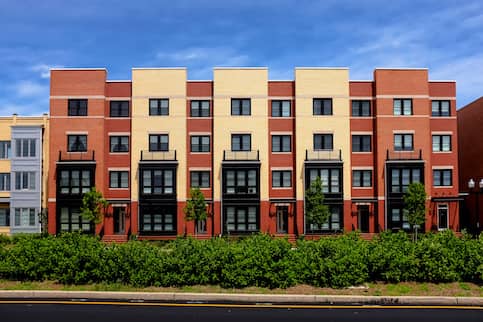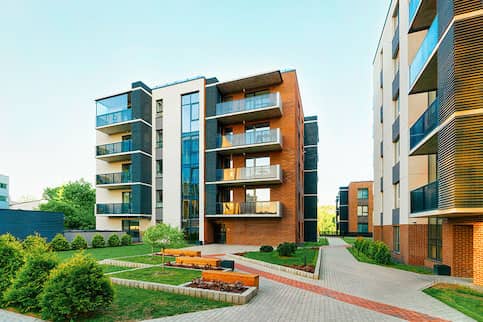Exactly How Condo HOA Regulates Shared Rooms and Enhances Neighborhood Harmony
The administration of shared areas within a condo association plays an essential duty in fostering neighborhood cohesion and keeping property worths. With the establishment of comprehensive guidelines, the Condo HOA not just manages the usage of communal facilities but additionally promotes a culture of regard and accountability amongst citizens.
Role of the HOA
The homeowners organization (HOA) works as the regulating body for condo neighborhoods, playing an essential role in maintaining the residential or commercial property and promoting a natural living setting. It is in charge of enforcing and enacting area rules and guidelines, which are designed to maintain the visual value and functionality of the common area. This governance makes certain that all residents adhere to a standard collection of assumptions, cultivating a feeling of unity amongst diverse home owners.
Furthermore, the HOA handles the economic aspects of the community, including budgeting, gathering dues, and maintaining common areas. This monetary oversight is crucial in ensuring that necessary maintenance and renovations are brought out immediately, improving property worths gradually. The HOA likewise serves as an intermediary between residents and external entities, such as neighborhood government and service providers, attending to public issues properly.
Additionally, the HOA typically arranges community occasions and programs, urging neighborly communications and developing partnerships amongst homeowners. By helping with open communication and dealing with grievances, the HOA adds to an unified living environment. Thus, its complex role is essential in ensuring the smooth operation and general satisfaction within condominium communities.
Regulations for Shared Areas
Reliable administration in condo neighborhoods necessitates clear regulations for common areas, which are essential for preserving order and advertising a sense of area among citizens. These regulations offer as standards that make certain every person can enjoy common areas, such as pools, gardens, and entertainment facilities, without conflict.

Moreover, sanitation and maintenance criteria are important, usually stating that citizens must tidy up after themselves and report any type of problems to the house owners' organization. By clearly interacting these expectations, the HOA can motivate and lessen misunderstandings regard amongst citizens.
Eventually, well-defined regulations for shared rooms add to the general quality of life in a condominium area, permitting homeowners to exist together in harmony while delighting in the features that enhance their living experience. condo hoa.
Significance of Community Standards
Area standards play a substantial duty in promoting a cohesive and respectful atmosphere within condo organizations. These standards establish clear assumptions for homeowners, promoting a feeling of responsibility and shared duty. By delineating acceptable actions and techniques, area guidelines assist protect against misunderstandings and problems amongst citizens.
In addition, these guidelines act as a structure for preserving the visual and functional integrity of shared rooms. They make certain that all citizens follow criteria concerning building maintenance, noise degrees, and use of communal centers. This uniformity not only improves the visual charm of the neighborhood but additionally adds to overall building values, benefiting all property owners.

Problem Resolution Approaches
Browsing problems within a condominium organization calls for an organized strategy to make certain fair and effective resolution. Effective dispute resolution strategies commonly begin with open interaction, encouraging citizens to voice concerns in a considerate way. Developing an assigned network for grievances, such as a pointer box or an online forum, can promote this procedure.
Mediation is an additional critical strategy, in which a neutral 3rd party aids disputing locals reach a mutually acceptable service. This technique fosters collaboration and understanding, minimizing hostility - condo hoa. The HOA board must likewise develop clear procedures for see here attending to complaints, ensuring all events know the actions included
Routine dispute resolution training for board participants can improve their ability to manage disputes properly. Utilizing a distinct framework, such as the "Interest-Based Relational Approach," helps focus discussions on rate of interests as imp source opposed to placements, advertising a solutions-oriented mindset.
Advantages of Area Consistency
Fostering community consistency within a condo association brings many advantages that boost the general living experience for citizens. A harmonious community motivates collaboration and cooperation amongst next-door neighbors, resulting in a more gracious atmosphere. When homeowners really feel linked and revered, they are more probable to engage in communal tasks and join decision-making processes, causing a stronger feeling of belonging.
Furthermore, neighborhood consistency dramatically reduces misunderstandings and disputes, which can or else interrupt everyday life. A calm atmosphere minimizes stress and anxiety and promotes psychological wellness, permitting residents to enjoy their homes fully. In addition, unified relationships usually equate right into boosted residential property worths, as potential customers are attracted to communities identified by stability and teamwork.
Final Thought
In recap, the role of the Condominium HOA is crucial in controling common areas and fostering neighborhood harmony. condo hoa. Through the facility of clear rules and neighborhood standards, citizens are Check This Out motivated to keep a respectful and accountable atmosphere. Reliable dispute resolution methods additionally enhance interaction and cooperation among residents. Eventually, the efforts of the HOA add to a natural area, promoting both home values and overall resident complete satisfaction. The favorable influence of these campaigns is necessary for sustained common health.
Moreover, the HOA usually organizes community occasions and programs, urging neighborly interactions and constructing relationships among locals. By marking appropriate actions and techniques, community standards aid protect against misunderstandings and conflicts amongst residents.
Additionally, neighborhood guidelines promote effective interaction among residents and the Homeowners Organization (HOA) With the facility of clear rules and area guidelines, citizens are encouraged to preserve a considerate and responsible setting. Ultimately, the initiatives of the HOA contribute to a natural community, promoting both home values and general resident satisfaction.